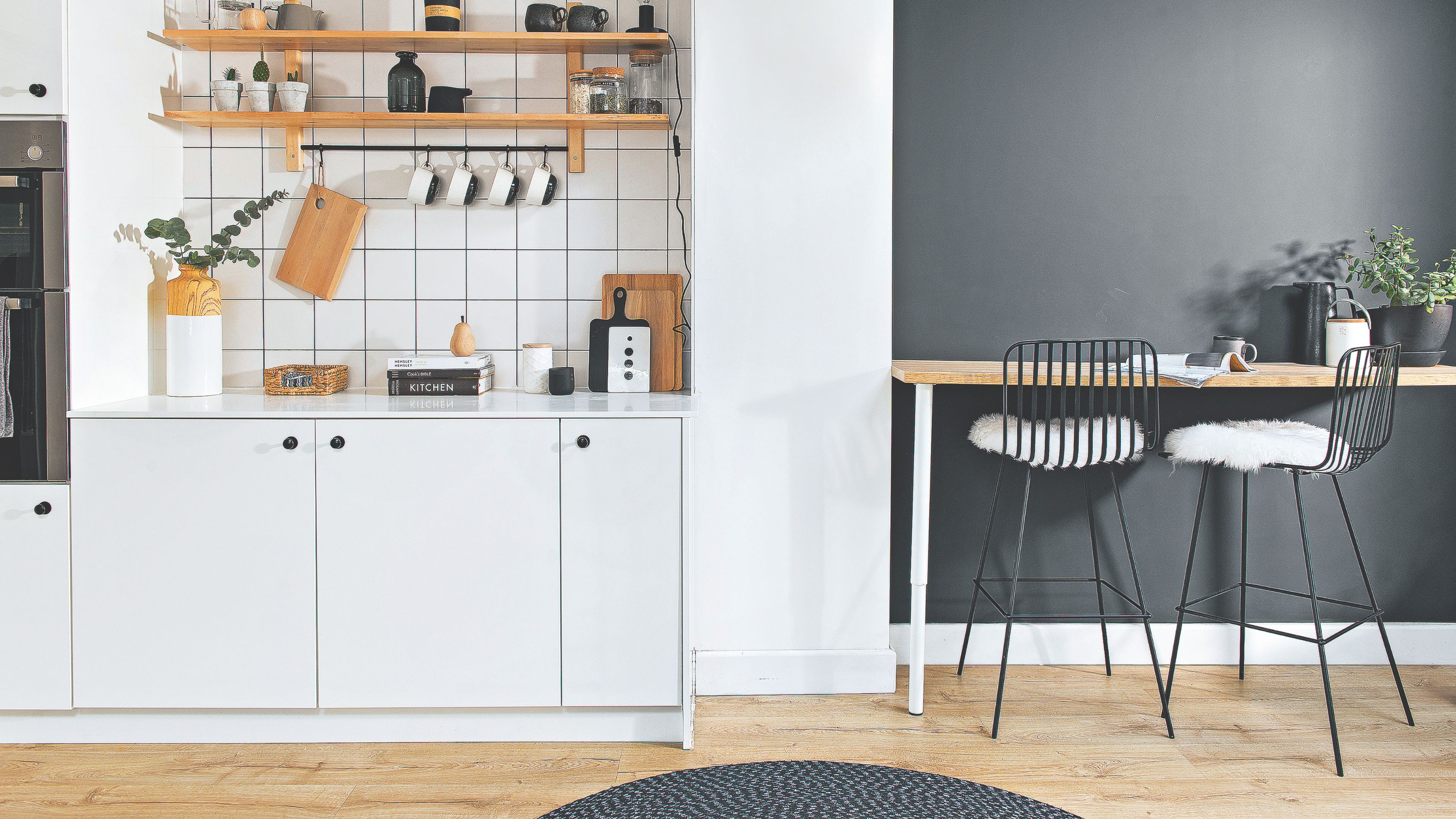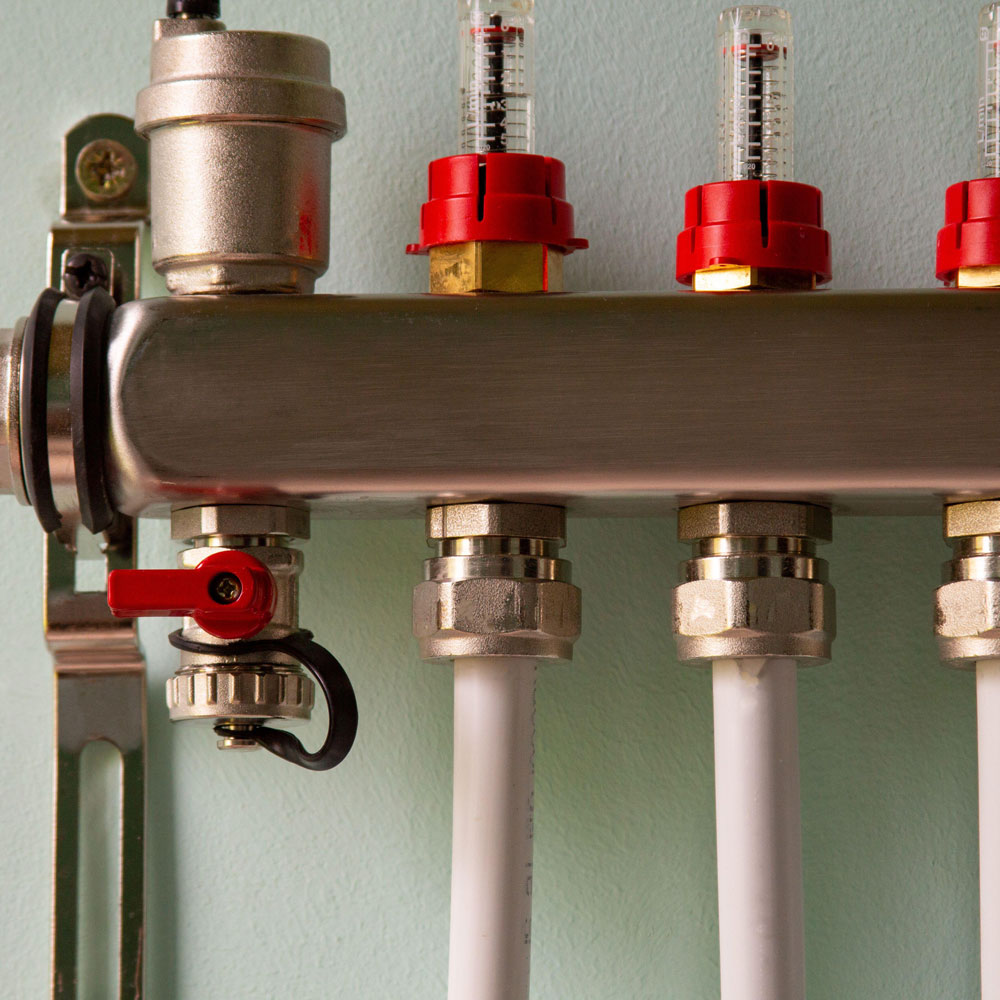Is underfloor heating expensive? This is everything you need to know about installation, running costs, and maintenance
Get to grips with the finances for the installation, running and maintenance of underfloor heating

Lauren Bradbury

Unfortunately, upgrading your home can be incredibly expensive - especially when it comes to your heating system. And if you’re considering installing underfloor heating (UFH) in your home, it’s fair to say that underfloor heating costs can directly impact your decision.
It’s no wonder homeowners have turned to underfloor heating to heat their homes in recent years. This space-saving heating option provides consistent warmth in a room, allowing the heat to rise through your home and keep you warm in winter. However, one of the things experts want you to know before installing underfloor heating is that there are many costs associated with this heating type - both now and in the future.
According to Checkatrade, homeowners can expect to pay between £3,000 – £13,000 for underfloor heating in an average-sized property.’ Of course, this large window can make it difficult for you to determine whether it’s really worth it. That’s why we’ve outlined the three things you need to consider to work out exactly how much underfloor heating will cost you, from installation to running costs and maintenance.

How much it costs to install underfloor heating
One of the most significant costs you need to consider with underfloor heating is how much it costs to install. After all, this process can be a big job - both in terms of the process itself and the labour that comes with it. But to work out the price tag associated with installation, you need to consider a few things:
1. The type of UFH system
There are many different types of heating systems, and those categories can often be divided into smaller sections - and this is the case with underfloor heating. In the UK, there are two main types of underfloor heating available to homeowners, electric underfloor heating (often called a dry system) and hydronic underfloor system (called a wet system).
When compared by price, electric underfloor heating systems have the edge over water-based arrangements, as they’re swift and straightforward to fit. However, while a warm water system means spending more at the outset, this must be balanced against the fact that it comes with lower running costs in the long term - something we’ll touch on more later.
Nicholas Auckland, heating and energy expert at Trade Radiators, offers a rough guide on how much it costs to install these different types of underfloor heating, ‘Electric UFH costs around £50 to £100 per square metre to install. This job can be done in a day or two (depending on size of space covered). Water-based UFH: £130 to £200 per square metre. This is because installation is much more invasive and takes longer (up to a week).’
Sign up to our newsletter for style inspiration, real homes, project and garden advice and shopping know-how
2. The age and construction of the home
It should probably come as no surprise to learn that the bigger your home, the higher the installation costs. But what many people don’t realise is that the age of your home can also impact the overall price of UFH installation.
Laying the pipework for UFH in a new home is typically more straightforward than in a renovation scenario. The extra work will, of course, add to your overall costs - both in terms of tools needed and general labour costs.

3. The flooring type
You need to factor in your flooring type when it comes to UFH installation costs. Nicholas says, ‘Not all flooring types are compatible with UFH (for example, solid wood flooring).’ This is something to consider if you want to install underfloor heating and will have to change your flooring ideas in the process - as this will increase the installation costs.
As Nicholas mentioned, underfloor heating won’t work with solid wood flooring but can work with carpet if you put certain measures in place. Alternatively, you could swap out your solid wood flooring for engineered wood to ensure your UFH works without having to compromise too much on the aesthetics.
Natalie Mudd, Co-Founder & Creative Director, Knot & Grain comments, ‘Engineered wood flooring is an ideal choice for use with underfloor heating systems. Unlike solid wood, engineered wood benefits from a multi-layered construction which reduces the risk of expansion or contraction and enhances its resistance to moisture and humidity – this also allows the heat to transfer through the wood more effectively.’
But if this is something you need to do to make the most of underfloor heating, you’ll need to incorporate the removal and installation of your flooring into the overall UFH installation costs, too.

4. Supply and labour costs
While it’s certainly possible to retrofit underfloor heating yourself if you’re a seasoned DIY-er and are willing to accept responsibility for any mistakes, it’s highly likely that you’ll need to employ a professional to do the job for you.
Yes, though some electric-powered products aren’t beyond the realms of possibility for a competent DIYer to install, especially if you’re only laying the system in one room, bringing in a professional will always deliver the best results - but ultimately cost you more.
'You can expect to pay between £200 and £300 per day in labour costs,' says Luciana Kola, marketing manager at Uponor UK. 'You will also need to call out a qualified electrician to connect the system to your power supply, which takes a few hours and costs will vary here, too.'
However, it’s important to note that these charges are subject to your location (for example, labour costs in smaller villages are generally cheaper than those in the city) and the individual tradesperson. In many cases, your UFH supplier may have its own Registered Installer scheme that will save you money on installation costs.
Always obtain multiple quotes from multiple companies and tradespeople before settling on your chosen option. This will help you understand whether you’re paying more for your UFH installation than you need to.
How much it costs to run underfloor heating
With energy bills rising and more people trying to save energy at home, it’s also vital that you understand how much it costs to run underfloor heating. However, once again, this isn’t a simple equation, as there are a number of considerations you need to examine before landing on a figure. These include:
1. The proper installation
The quality of installation of your underfloor heating can make or break how efficient it is. The key factor to bear in mind with the cost of running underfloor heating is that a poorly fitted system can lead to patchy heat output.
In turn, this may require you to turn up the temperature on your thermostat or have the heating turned on for longer. This will lead to higher running costs overall, so it’s important to get your installation right from the start.
2. The energy price cap
Another key factor when determining the running costs of underfloor heating is the current energy price cap - which changes every three months - and the type of underfloor heating you have.
The experts at Confused.com Energy explain, ‘As of December 2024, electricity costs 24.50p per kWh. At this price, underfloor heating would cost the average UK kitchen - which is about 13 square metres - £11.27 a month to heat for 2 hours. However, from January 1st, the energy price cap will increase to 24.86p per kWh. At this price, heating the same kitchen for 2 hours will cost £11.44.’
They add, ‘However, water-based underfloor heating typically works out cheaper than electric systems once installation has been completed. Gas costs just 6.24p per kWh, however, this only covers energy costs - water costs will also have to be factored in. But, bear in mind that from the start of 2025, the price of gas will increase slightly to 6.34p per kWh.’
This may sound expensive, but it’s all relative to where you plan on using underfloor heating. For example, if you’re only installing electric UFH in a bathroom, it might be the best option as the associated running costs (as you’re not using it to heat the whole house) aren’t so prohibitive.

3. The level of a home’s insulation
There’s no point in spending the costs associated with underfloor heating for it to leak out of your home. So, a home’s insulation level will also make a huge difference to the running costs of underfloor heating.
Unfortunately, home heat loss is extremely common in the UK, and poor insulation can result in heat loss from your roof, walls, and even through your floors. This means that you’ll have to run your UFH for longer to really feel the effects.
Because of this, minimising heat loss through your floors is another way to keep running costs to a minimum. And as Sarah Wazir, marketing executive at Warmup, explains, ‘Incorporating insulating boards can boost the warm-up period for your system and reduce running costs by up to 50%.’
If you’re not sure whether your home is leaking heat or not, it might be worth paying a small fee to have an expert give your house a home health report.
4. The temperature you choose
The temperature at which you set your underfloor heating ultimately depends on your flooring type, but it’s fair to say that every homeowner also has their preference. And while the higher the temperature, the higher the running costs of UFH, most experts agree that underfloor heating is cheaper to run in the radiators vs underfloor heating debate.
'This is because UFH runs at a lower temperature than radiators, yet still produces the same level of warmth in the room,' says Luciana from Uponor.
'Radiators need to be heated to a higher temperature (between 65°C and 75°C) to warm a room effectively, whereas UFH only needs to run at a temperature of 29°C or less, thereby consuming less energy and keeping your energy bills far lower.'
However, if you choose to run your underfloor heating at a higher temperature and for longer, you should expect your heating bills to increase.

5. Any smart thermostats
In a world where smart heating is becoming increasingly popular, it’s fair to say that using an effective system to control your UFH will help keep running costs to a minimum. Smart thermostats, for instance, can help prevent energy wastage by ensuring your heating is only running when needed.
Plus, this setup also gives you access to remote management of your system, so if you decide to go to a restaurant rather than come home for dinner, you can adjust the heating settings via smartphone.
These systems also allow you to monitor your energy usage, and some even learn everything they need to know about your heating and energy usage to offer guidance on how to reduce your energy bills. So this can significantly reduce the running costs of underfloor heating.
Underfloor heating maintenance costs
It’s no secret that boilers need servicing, and homes with heat pumps also need to get their heat pumps serviced. So, it shouldn’t surprise you to learn that underfloor heating also needs to be maintained over the years - and this is another cost to consider.
And while underfloor heating requires very little upkeep compared to other heating systems out there, there are a few moving parts contained within the system that need some TLC every so often. 'It is recommended that your heating engineer inspects the manifold every year, along with your boiler,' says Matt Densham from Robbens. 'You may need to replace the pump every five to ten years and the actuator heads every 10 to 15 years.’

The price of these check-ups and any replacement parts will vary depending on many of the factors above, but the experts at Confused.com Energy suggest that you should budget around £180 per year for general maintenance. They also add, ‘Modifications and unexpected problems involving small repairs can cost up to £100, with more severe issues costing several hundred.’
Of course, you can also check whether the installation is covered by any kind of warranty. This may cover the costs should any components fail within a specified period, provided that one of the manufacturer’s approved installers has fitted your system.
FAQs
What is the downside of underfloor heating?
Although there are many advantages to adding underfloor heating to your home, there are also many disadvantages. These include:
- Expensive installation costs.
- Not compatible with every flooring type.
- Can be expensive to run in some instances.
- It can take a while to heat up.
- It can restrict furniture placement.
- Can be expensive to repair.
Is it cheaper to leave underfloor heating on constantly?
In theory, you may assume that constantly leaving underfloor heating on will cost you more money. And while this is true in the short term, it can actually work out cheaper in the long run - and especially in the winter.
In fact, most experts advise adopting the ‘slow and low’ method with your underfloor heating in the winter, whereby you keep your underfloor heating at a lower temperature 24 hours a day. This means that you won’t have to waste energy turning it off and on again at regular intervals. It also means that your home is constantly being heated.
So, those are the general underfloor heating costs - but for an exact quote for your home, it’s worth contacting the professionals.

Rebecca Foster started her journalism career in Bangkok in 2013, where she worked on the in-house editorial team at a luxury homes magazine. Since then, Rebecca has contributed to numerous property and interiors titles in the UK and Southeast Asia. She re-located to London in 2015 to work at one of the country’s leading self-build and home renovation magazines. In 2017, she left her job to split her time between freelance journalism and teaching yoga.
- Lauren BradburyContent Editor (House Manual)